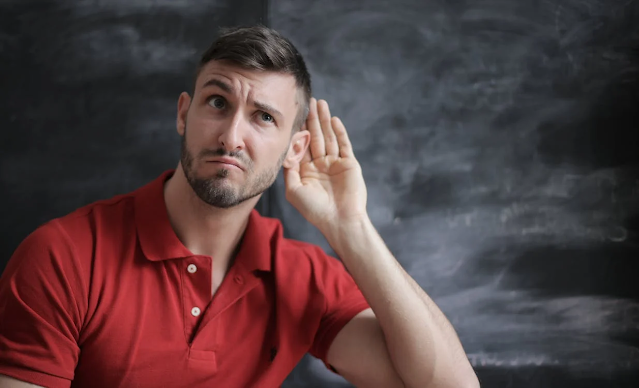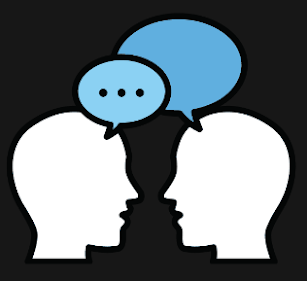Active Listening: The Key to Effective Communication
Active Listening: The Key to Effective Communication
Have you ever been in a situation where you were talking to someone and you could tell that they were not really listening to you?
Maybe they were checking their phone, or their mind seemed to
be elsewhere?
It can be frustrating and demotivating when you feel like the person you're talking to is not truly hearing what you're saying.
It can make you feel unimportant – so you wouldn’t want to make someone else feel that way, would you?
That’s where active
listening comes in.
Understanding the Concept of Active Listening
Active listening is a powerful communication skill that can greatly enhance our personal and professional interactions.
It involves paying close attention to the speaker, understanding
their message, and providing verbal and nonverbal cues that show you are
engaged in the conversation.
According to a study by Harry
Weger Jr. in 2014, the relative effectiveness of active listening in initial
interactions is significant.
In this article, we will explore
the concept of active listening, identify barriers to its practice, learn techniques for actively listening, discover ways to incorporate it into daily
communication, and find out how to measure the impact of active listening on our communications, and it’s effect on our success.
Active listening is not simply
about hearing the words that are spoken and waiting for our turn to speak, but about fully understanding the
message behind them.
This means not only paying
attention to the words being said, but also to the tone, nonverbal cues, and
context in which they are being said. It also involves being able to accurately
reflect back what the speaker has said and ask clarifying questions.
By actively listening, we are
able to build deeper connections with others, better understand their
perspectives, and ultimately, improve the effectiveness of our communication.
In the next section, we will
delve into the barriers that can prevent us from effectively practicing active
listening. Additionally, we will explore techniques for overcoming these
barriers and becoming better active listeners.
As we learn more about active
listening, we will also discover ways to incorporate it into our daily communication
and measure the impact of this skill on the effectiveness of our interactions.
Identifying the Barriers to Active Listening
While active listening is a
valuable communication skill, it can be difficult to practice in certain
situations. There are a number of barriers that can prevent us from actively
listening, including distractions, assumptions, and biases.
One of the biggest barriers to
active listening is distractions. In today's fast-paced and technology-filled
world, it can be easy to be distracted by our phones, computers, and other
electronic devices.
Additionally, even when we are physically
present in a conversation, our minds may wander to other thoughts, such as our
to-do list or a past conversation. It's important to be aware of these
distractions and make a conscious effort to eliminate them when actively
listening.
Another barrier to active listening is assumptions. We often make assumptions about what someone is going to say before they even speak, or even based on past experiences.
When we make
assumptions, we're not truly listening to the speaker and we are likely to miss
important information.
Remember, when you ASS-U-ME, you
make an ASS out of U and ME…
Bias is another barrier to active
listening. We all have biases, whether conscious or unconscious, and these can
influence how we interpret and respond to what is being said.
For example, if we have a bias
against a particular group of people, we may be more likely to dismiss or
discount their ideas.
To overcome these barriers, it's
important to be mindful of your own thoughts and emotions, and to actively try
to eliminate distractions, assumptions, and biases during conversations.
Techniques such as taking deep
breaths, asking clarifying questions, and paraphrasing what the speaker has
said can also help you to become a more effective active listener.
Practice Active Listening Techniques
Active listening is a skill that can be developed and practiced over time. Here are some techniques that can help you become a better active listener:
By incorporating these techniques into your conversations, you can become a more effective listener and improve the quality of your interactions.
You can also practice
active listening in your daily communication by taking time to listen to your
friends, family, and colleagues.
Incorporating Active Listening into Daily Communication
Active listening is a skill that
can be applied to all aspects of our personal and professional lives.
Incorporating active listening into daily communication can greatly improve our
relationships and overall effectiveness in communicating with others.
To incorporate active listening into daily communication you need to make a conscious effort to do so.
This means
taking the time to actively listen in conversations and eliminating
distractions to truly hear what is being said.
According to a study by Ian
Hutchby in 2010, "Active Listening: Formulations and the Elicitation of
Feelings-Talk in Child Counselling", active listening can have a positive
impact on the process of counselling, particularly when it comes to eliciting
feelings-talk from children.
Basically, the findings showed
that by practicing these techniques and showing that you are actually
listening, people are more likely to open up to you and disclose their true
feelings, which is key in building relationships with people.
Take the time to have a conversation with someone each day and practice the active listening techniques mentioned in the previous section, such as reflective listening and open-ended questions.
These
techniques can be applied at any time and can help to improve understanding and
build deeper connections with others.
Additionally, nonverbal cues,
such as maintaining eye contact and an open posture, can also be incorporated
into daily communication to show that you are actively listening.
Creating a culture of active
listening within teams and organizations is also particularly effective.
According to the study
"Experiential Learning And Learning Environments: The Case Of Active
Listening Skills" by J. E. Huerta-Wong & R. Schoech in 2013, active
listening can be an effective way to improve collaboration, innovation, and
decision-making within teams, which can boost productivity and improve results.
Measuring the Impact of Active Listening on Effective Communication
Measuring the impact of active
listening on effective communication can help to determine the effectiveness of
your listening skills and identify areas for improvement.
Here are a few ways to measure
the impact of active listening:
- Self-reflection: Take some time to reflect on your own active listening skills. Consider how often you practice active listening, how well you understand the speaker's message, and how well you are able to reflect back what the speaker has said.
- Feedback from others: Ask for feedback from others on your listening skills. This can be done informally, such as asking a friend or colleague for their thoughts, or more formally, such as through a survey or performance review.
- Measuring outcomes: Measure the outcomes of conversations or interactions where active listening was utilized. This can include things like improved understanding, stronger relationships, and increased collaboration.
By measuring the impact of active listening on effective communication, you can determine which techniques are working well and which may need improvement.
Additionally, it can also help to
identify specific areas of difficulty and provide clear, actionable advice on
how to address them.
Final Thoughts: How Developing Your Active
Listening Skills Help You Achieve Success
As we have shown, developing your active listening is a valuable skill that can greatly benefit you in both your personal and professional life.
Developing this skill can lead to a number of
positive outcomes, including improved relationships, increased collaboration
and teamwork, enhanced problem-solving and decision-making, greater
understanding and empathy, and improved communication.
When it comes to relationships, active listening can help to build deeper connections with others by improving understanding and trust. This can lead to stronger, more positive relationships both at home and at work.
By actively listening, you can better understand the perspectives of others and work together more effectively to achieve common goals.
This is particularly important in
a work setting, where effective collaboration and teamwork can lead to
increased productivity and success.
Active listening also promotes problem-solving and decision-making by providing you with more information and different perspectives to base decisions on.
This can lead to better
problem-solving and decision-making, which in turn can lead to greater success
in both personal and professional situations.
Furthermore, active listening
involves understanding the feelings and emotions of others, and this can lead
to greater understanding and empathy. This can also help to build better
relationships and connect with others in a more meaningful way.
Finally, active listening improves the effectiveness of communication by ensuring that the speaker's message is fully understood, so there are fewer misunderstandings and conflicts, which ultimately leads to more positive interactions.
Improved communication is essential for success in the professional environment, and active listening can be the key to achieving this.
Remember, you have 2 ears and one
mouth for a reason – listen twice as much as you talk.














Comments